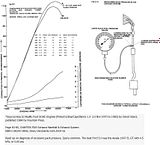Hi,
I recently purchased a 1980 fairmont with the 3.3. My plans are to put a 302 in it but in the mean time I coukd not resist tinkering with it.
The car sat for about 8 months (they say) after it was parked with a defective starter. Well, I replaced it after finding a new one and it turns over just fine but firing it is a bit tedious. I have to hold it at half throttle for a minute or two to coax it into a idle. And it seemingly runs smooth. But crack the throttle and it falls on its face and while I've read these are slow engines a bicycle coukd take this thing in a city block race.
So I rebuilt the carb....something new to me and come to find out that just means taking it apart and cleaning it. Much to my disappointment i didn't fine the jet plugged or accelerator plunger hardened. But i cleaned the hell out of it and put a new filter on it.
.....and same issue. No change at all. Changing the idle screw varies it between shaking violently to stalling but no where in between does it change the main concern. I took my hole saw bit and cut a hole upstream from the converter suspecting it would change but it did not.
I still feel like the manifold itself could have a restriction but that doesn't make sense to me. Yes it has the air injection stuff on it although it's probably been inop for years as the pump is seized and not connected. Could it be ignition? There is a vacuum line going to the dist. maybe that's connected to something mechanical stuck in the wrong position? Oh, plugs look fine. Has newer wires and cap.
Any by help would be appreciated. Thanks!





 Reply With Quote
Reply With Quote






Connect With Us